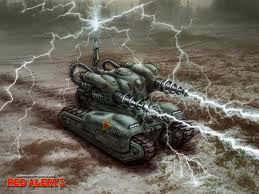98 posts
• Page 3 of 4 • 1, 2, 3, 4
GET YOUR PLOT OFF OF MY CHARACTER SHEET!
-

FoReVeR_Me_N - Posts: 3556
- Joined: Wed Sep 05, 2007 8:25 pm
In the context of Skyrim, I play it for the polt and character development.
And then, of course, there's the two types of "character development". 1) the stats/rules/skills based development ("what build are you trying"), and 2) emotional & personality development.
To put it simply i won't buy another TES if they don't put more time into character depth backstory and interaction Skyrim should be better in this area. Yes i'm a player of BioWare games and why not they make great games with very well written storylines.
Because it's nice to have different styles of games. Some people like open-world TES-like games, some people like min/max number crunchers (where the total focus in on gear and skill/stat picks), some people like interactive novels & heavily plotted mostly-linear games (Bioware style), etc, etc, etc.
There's no "one true way". Personally, I'd rather that companies keep making different games for us to choose around, rather than trying to fit any one person's (or demographic's) "preferred" style.
Like I said.... when I want to play a Bioware game, I play a Bioware game. I don't pick up a gamesas (or Blizzard, or SquareEnix) game and expect it to be a Bioware game.
-

Rude_Bitch_420 - Posts: 3429
- Joined: Wed Aug 08, 2007 2:26 pm
Kind Regards
Holy crap! Somebody here makes sense!
Leave while you can, save yourself!
Honestly, I don't know what the OP is talking about. So the game forces you into a certain lore? How? Other than being Dovakhiin, which doesn't mean much other than an ingame title for "main character" and you can just always easily ignore it.
The game doesn't change your character, you do. You raise your skills, because you use them, you'll become a mage, because you cast spells all the time, you are considered a thief by many in the game, because you stole things from people. You know, CHOICES AND CONSEQUENCES!
And then came up this other thing, which I'm pretty sure is not what the OP talks about, but whatever. This "lack of choice" in quests. There is always a choice. You can always, NOT do what you are asked. And really, compare this to other TES games! How do you finish the main quest in Morrowind? You have to become Horathor by all great houses, and for all of them, you are REQUIRED to kill at least one of the leaders, if you are good at speechcraft, if not, you have to basically kill everybody who oppose you. Same whith many side-quests. A lot of Mages Guild and Thieves Guild quests were surprisingly violent, and the only way to raise ranks is to complete these quests.
Again, you could always, NOT do these quests.
-

lydia nekongo - Posts: 3403
- Joined: Wed Jul 19, 2006 1:04 pm
I really wish that the industry (Namely Bethesda) would stop creating fantastic games that I love in all ways... Until their plot steels my character away from me! Maybe the development team needs to actually sit down together and play some table top RPG's. You know? Have some idea about what the purpose, and more importantly, the fun of (and frustration of) the RPG is.
I'm not some total munchkin lamenting the downfall of table top. I honestly mean it. Do they even know (or try to know) why we like RPG's? From titles like Skyrim, it would seem like they don't... So here is the answer. It's Freedom. Personal freedom and self accountability in a fun, interesting and low consequence environment. It's so obvious. That's why it's called fantasy. The point of playing RPG's is to make decisions. Not to watch some brilliant plot unfold. I have Chris Nolan for that. It's to exercise perfect control over one thing... your character (sheet). I'm not talking about nerfing one class or buffing another. I'm talking about PLOT V.S. CHARACTER. The "storyteller" creates and controls everything in the world (table top or console). The premise is that the player characters can interact with and manipulate cretin parts of that world... But we all know that that is an illusion. You find the clue when and where the "storyteller" wanted you to find it etc, etc... In actuality, ultimately the "storyteller" controls every outcome in the game world, he just lets the player characters think and feel like it was due to them.
So if we know it's a lie than why do we like to play? Because the characters and more importantly the "storyteller", have an unspoken agreement... (The one Bethesda and others love to break) That rule is that the player characters control themselves (i.e. their character sheet). The story teller can't just turn your 8th level fighter into a 12th level wizard. It is the one realm, the single, solitary spec of control that the player characters have. And that is why we like to play these games. An amateur (or just plain bad) "storyteller" manipulates his players character sheets (not their emotions or perceptions) to arrive at the desired plot outcome. Presumably to execute and realize his creative vision (at the expense of the players enjoyment). The number one way (table top or otherwise) that good RPG's go bad is because "storytellers" make the conscious decision to turn their players characters into plot devices.
Please stop. I pay good money for these games and all I want is for my character (and his emotions, opinions, skills and abilities) to be under my control. We can't rewrite the code and change your world. So please, Just leave our characters alone. Don't force the character that you told me I controlled, you asked me to make in the beginning of the game... Don't force him to have spells or a voice in his head or turn into another class or any of your other contrivances. You worry about the world and let us worry about our characters.
I'm not some total munchkin lamenting the downfall of table top. I honestly mean it. Do they even know (or try to know) why we like RPG's? From titles like Skyrim, it would seem like they don't... So here is the answer. It's Freedom. Personal freedom and self accountability in a fun, interesting and low consequence environment. It's so obvious. That's why it's called fantasy. The point of playing RPG's is to make decisions. Not to watch some brilliant plot unfold. I have Chris Nolan for that. It's to exercise perfect control over one thing... your character (sheet). I'm not talking about nerfing one class or buffing another. I'm talking about PLOT V.S. CHARACTER. The "storyteller" creates and controls everything in the world (table top or console). The premise is that the player characters can interact with and manipulate cretin parts of that world... But we all know that that is an illusion. You find the clue when and where the "storyteller" wanted you to find it etc, etc... In actuality, ultimately the "storyteller" controls every outcome in the game world, he just lets the player characters think and feel like it was due to them.
So if we know it's a lie than why do we like to play? Because the characters and more importantly the "storyteller", have an unspoken agreement... (The one Bethesda and others love to break) That rule is that the player characters control themselves (i.e. their character sheet). The story teller can't just turn your 8th level fighter into a 12th level wizard. It is the one realm, the single, solitary spec of control that the player characters have. And that is why we like to play these games. An amateur (or just plain bad) "storyteller" manipulates his players character sheets (not their emotions or perceptions) to arrive at the desired plot outcome. Presumably to execute and realize his creative vision (at the expense of the players enjoyment). The number one way (table top or otherwise) that good RPG's go bad is because "storytellers" make the conscious decision to turn their players characters into plot devices.
Please stop. I pay good money for these games and all I want is for my character (and his emotions, opinions, skills and abilities) to be under my control. We can't rewrite the code and change your world. So please, Just leave our characters alone. Don't force the character that you told me I controlled, you asked me to make in the beginning of the game... Don't force him to have spells or a voice in his head or turn into another class or any of your other contrivances. You worry about the world and let us worry about our characters.
-

Nikki Lawrence - Posts: 3317
- Joined: Sat Jul 01, 2006 2:27 am
OP, if you don't like how bethesda makes games, don't buy them... This isn't an MMO.. You sound like a child whom hasn't yet realized that the world doesn't revolve around them.. There are other games out there fitting your description so why not play them instead of trying to crybaby bethesda into YOUR own wants and needs..
Plus idk wtf you are even talking about.. You have loads of freedom in this game.. You can ignore the main story if you want.. It doesn't really "force" you into anything beyond being dragonborn (which if you have any imagination, you could ignore) and getting attacked by dragons.. (which you could write off as random.) I think you are just whining about nothing, so i've no sympathy at all considering you are the ONLY person i've heard complain about this AT ALL.
Also, your poll is pigeonholed.. It's so shallow and gives so little options, that that the majority is going to pick what you wanted them to pick to make your point...
Plus idk wtf you are even talking about.. You have loads of freedom in this game.. You can ignore the main story if you want.. It doesn't really "force" you into anything beyond being dragonborn (which if you have any imagination, you could ignore) and getting attacked by dragons.. (which you could write off as random.) I think you are just whining about nothing, so i've no sympathy at all considering you are the ONLY person i've heard complain about this AT ALL.
Also, your poll is pigeonholed.. It's so shallow and gives so little options, that that the majority is going to pick what you wanted them to pick to make your point...
-

Ownie Zuliana - Posts: 3375
- Joined: Thu Jun 15, 2006 4:31 am
Thank you for repeating yourself without any addendum, being more clearer what the hell you are talking about...
-

Michelle davies - Posts: 3509
- Joined: Wed Sep 27, 2006 3:59 am
All the questions heavily depend on what RPG it is.
-

Queen Bitch - Posts: 3312
- Joined: Fri Dec 15, 2006 2:43 pm
I didn't vote because I like to do both equally.
-

Shiarra Curtis - Posts: 3393
- Joined: Thu Jan 04, 2007 3:22 pm
Skyrim isn't Lonesome Road though. The problem with Skyrim is there's literally NO choice at all. Every quest is solved the exact same way, and the few that aren't all have "pseudo-choices" where your decision you make makes absolutely 0% different in how the quest is completed.
There's plenty of choice, for example with the Companions it makes perfect sense. You CAN'T join their inner circle if you're not one of them.
You're complaining about dumb stuff really, there's tons of choice in the game.
-

Dustin Brown - Posts: 3307
- Joined: Sun Sep 30, 2007 6:55 am
All the questions heavily depend on what RPG it is.
Exactly.. And there is no one great RPG archetype like OP thinks.. RPGs are all different and unique and that is what makes them interesting... I love Skyrim, and think they did great.. I agree with most of the people in this thread.. OP is just whining.. Oblivion, Morrowind, they were all the same.. Nothing has changed.. I think OP is just mad that it's not living up to HIS expectations of a table-top RPG (which like others have said, if your DM just let you do whatever you wanted, they were a [censored] DM..) but i've a feeling that his expectations are skewed anyways... so oh well.. I'm gonna go play some Skyrim and love it just to spite OP's [censored]..
-

Amanda savory - Posts: 3332
- Joined: Mon Nov 27, 2006 10:37 am
Seriously? You are complaining that this game does not give you enough choice? Just because there are hundreds of quests presented does not mean that you need to participate in every single one of them. By skipping out on a quest to steal a statue for someone, you are not going to be missing out on a quest, since there are still some hundred and 99 other quests out there. And this game has more choice than any other TES game to date.
If you want an RP that lacks complete plot control, which is exactly what you are coming across as saying, go play Second Life. This is an RPG designed to tell a magnificient story, Bethesda has never said that there will be no plot control or devices. you can wander around the world for an eternity if you so desire, without making any meaningful choices or plot decisions. You make every single choice, and some of the choices that you make are determined by whether or not you decide to continue down a certain path. There was another thread where some guy was complaining about the lack of options in the Dark Brotherhood quest line, in the beginning. simply put, he had the option of continuing with the quest and joining them, or just ignoring it and walking the other way. He was making a conscious decision to develop his own character, the game was not telling him that he has to do this, just that he can.
Yes, you are forced into something temporary as a plot device, but by participating in the quest you are participating in the plot device, so you can't complain. It was your choice to go there.
Spoiler
you have the option of destroying the Dark brotherhood if you want, as opposed to joining them and going on a murdering rampage. You miss out on a lot, but it is your choice to make, and you still get some profit off of it.
If you want an RP that lacks complete plot control, which is exactly what you are coming across as saying, go play Second Life. This is an RPG designed to tell a magnificient story, Bethesda has never said that there will be no plot control or devices. you can wander around the world for an eternity if you so desire, without making any meaningful choices or plot decisions. You make every single choice, and some of the choices that you make are determined by whether or not you decide to continue down a certain path. There was another thread where some guy was complaining about the lack of options in the Dark Brotherhood quest line, in the beginning. simply put, he had the option of continuing with the quest and joining them, or just ignoring it and walking the other way. He was making a conscious decision to develop his own character, the game was not telling him that he has to do this, just that he can.
The only way I can respond to this properly is by providing a spoiler for the Companions. I think it explains my and OP's frustration quite well though.
Spoiler
When you join the Companions, you soon learn they're werewolves. Their leader will tell you he views it as a curse, because although the werewolf status may only benefit you in this life, it changes where you go in the afterlife. You no longer go to Sovngarde like a Nord should, but you go to Hircine's realm and become his loyal terrier, enjoying an eternal hunt alongside your master for the rest of eternity. The leader then tells you some may be fine with such a fate, but he himself is a true Nord and would like to see Sovngarde and rest there.
I agreed with him. I wanted to be a true Nord too, so I didn't want to be a werewolf. Did I get this choice? Nope. I had to become one to participate in the Companions quest chain. Was this AT ALL neccesary? Absolutely not; they could've easily allowed me to continue on with the quest chain without forcing me to become a werewolf, but they did it anyways. The result is my character was rewritten by the game in a COMPLETELY unneccesary way. A simple choice and two extra lines of dialog could've fixed this and given me that choice, but no, they didn't ****ing bother.
And Bethesda has a bad habit of this. You NEVER have a choice, or if you do get a choice, it's a pseudo-choice: a choice that provides zero reward or consequence, where every single possible path you could've taken leads to the same end result.
I agreed with him. I wanted to be a true Nord too, so I didn't want to be a werewolf. Did I get this choice? Nope. I had to become one to participate in the Companions quest chain. Was this AT ALL neccesary? Absolutely not; they could've easily allowed me to continue on with the quest chain without forcing me to become a werewolf, but they did it anyways. The result is my character was rewritten by the game in a COMPLETELY unneccesary way. A simple choice and two extra lines of dialog could've fixed this and given me that choice, but no, they didn't ****ing bother.
And Bethesda has a bad habit of this. You NEVER have a choice, or if you do get a choice, it's a pseudo-choice: a choice that provides zero reward or consequence, where every single possible path you could've taken leads to the same end result.
Yes, you are forced into something temporary as a plot device, but by participating in the quest you are participating in the plot device, so you can't complain. It was your choice to go there.
Spoiler
And at the end of the quest line, you can cure yourself of lycanthropy. It is not a permanent decision.
-

John Moore - Posts: 3294
- Joined: Sun Jun 10, 2007 8:18 am
Voted:
* 'Following the Plot'
* 'No', (this question was not very clear; It does not distinguish between immediate replays and permenent abanonment of the game.)
* 'To see the plot unfold again'. (A really good RPG will have a mutable plot that will not unfold in quite the same way twice, unless you make all of the same choices and have the same random encounters again.)
* '6 or more' (If its a good RPG ~else just 1.)
I'm an RPG veteran of decades and I'm utterly baffled by this opinion.
~and this one too.
~and this one too (and most of the rest of the post).
* 'Following the Plot'
* 'No', (this question was not very clear; It does not distinguish between immediate replays and permenent abanonment of the game.)
* 'To see the plot unfold again'. (A really good RPG will have a mutable plot that will not unfold in quite the same way twice, unless you make all of the same choices and have the same random encounters again.)
* '6 or more' (If its a good RPG ~else just 1.)
I really wish that the industry (Namely Bethesda) would stop creating fantastic games that I love in all ways... Until their plot steels my character away from me! Maybe the development team needs to actually sit down together and play some table top RPG's. You know? Have some idea about what the purpose, and more importantly, the fun of (and frustration of) the RPG is.
I'm not some total munchkin lamenting the downfall of table top. I honestly mean it. Do they even know (or try to know) why we like RPG's? From titles like Skyrim, it would seem like they don't... So here is the answer. It's Freedom. Personal freedom and self accountability in a fun, interesting and low consequence environment. It's so obvious.
That's why it's called fantasy. The point of playing RPG's is to make decisions. Not to watch some brilliant plot unfold.
-

Toby Green - Posts: 3365
- Joined: Sun May 27, 2007 5:27 pm
Seriously? You are complaining that this game does not give you enough choice? Just because there are hundreds of quests presented does not mean that you need to participate in every single one of them. By skipping out on a quest to steal a statue for someone, you are not going to be missing out on a quest, since there are still some hundred and 99 other quests out there. And this game has more choice than any other TES game to date.
If you want an RP that lacks complete plot control, which is exactly what you are coming across as saying, go play Second Life. This is an RPG designed to tell a magnificient story, Bethesda has never said that there will be no plot control or devices. you can wander around the world for an eternity if you so desire, without making any meaningful choices or plot decisions. You make every single choice, and some of the choices that you make are determined by whether or not you decide to continue down a certain path. There was another thread where some guy was complaining about the lack of options in the Dark Brotherhood quest line, in the beginning. simply put, he had the option of continuing with the quest and joining them, or just ignoring it and walking the other way. He was making a conscious decision to develop his own character, the game was not telling him that he has to do this, just that he can.
Yes, you are forced into something temporary as a plot device, but by participating in the quest you are participating in the plot device, so you can't complain. It was your choice to go there.
Spoiler
you have the option of destroying the Dark brotherhood if you want, as opposed to joining them and going on a murdering rampage. You miss out on a lot, but it is your choice to make, and you still get some profit off of it.
If you want an RP that lacks complete plot control, which is exactly what you are coming across as saying, go play Second Life. This is an RPG designed to tell a magnificient story, Bethesda has never said that there will be no plot control or devices. you can wander around the world for an eternity if you so desire, without making any meaningful choices or plot decisions. You make every single choice, and some of the choices that you make are determined by whether or not you decide to continue down a certain path. There was another thread where some guy was complaining about the lack of options in the Dark Brotherhood quest line, in the beginning. simply put, he had the option of continuing with the quest and joining them, or just ignoring it and walking the other way. He was making a conscious decision to develop his own character, the game was not telling him that he has to do this, just that he can.
Yes, you are forced into something temporary as a plot device, but by participating in the quest you are participating in the plot device, so you can't complain. It was your choice to go there.
Spoiler
And at the end of the quest line, you can cure yourself of lycanthropy. It is not a permanent decision.
exactly.. how damn ignorant can people get.. You think they are gonna tell you they are cursed and then ask you, "hey do you want to be cursed like us now that you know our secret?" hell no, they are gonna force your to join them now.. I seriously dunno how half these people made it home from the store with skyrim without getting lost..
-

RaeAnne - Posts: 3427
- Joined: Sat Jun 24, 2006 6:40 pm
Yeah, no one in the industry really cares about this stuff anymore. It's all been discarded in the name of accessibility. I mean, I was just reading a thread where people were having panic attacks every time a quest offered an alternative option. So they'd reload just to see what the other thing was and if they were going to get a better reward. Can you imagine what a game packed full of meaningful choices would do to them?
-

Bird - Posts: 3492
- Joined: Fri Nov 30, 2007 12:45 am
Yeah, no one in the industry really cares about this stuff anymore. It's all been discarded in the name of accessibility. I mean, I was just reading a thread where people were having panic attacks every time a quest offered an alternative option. So they'd reload just to see what the other thing was and if they were going to get a better reward. Can you imagine what a game packed full of meaningful choices would do to them?
-

Alisha Clarke - Posts: 3461
- Joined: Tue Jan 16, 2007 2:53 am
That's why the game is completely linear...
no, wait, it's not.
no, wait, it's not.
-

Ray - Posts: 3472
- Joined: Tue Aug 07, 2007 10:17 am
Why does the OP present his personal opinion of table top as if it's a fact? What makes it more annoying is he literally implies the makers of these video game RPGs must not have played them as they don't agree with him. He could have actually started an interesting discussion, but instead his lack of critical thinking has turned this into nothing but an arrogant rant. Yes, people with creative friends with talent actually do play table top RPGs to experience a good story, one they have personal freedom in effecting. If your DM just let you do whatever you wanted, you had a bad DM, or you are a bad DM.
Spot on.
The GM or DM did a lot more than simply present players options. He or she was the narrator and guide through the game, but had to remain flexible as well.
-

P PoLlo - Posts: 3408
- Joined: Wed Oct 31, 2007 10:05 am
As an old gamesmaster from the time of the birth of tabletop RPG's (Yes, I have original copies of D&D and Aftermath, as well as numerous others), I doubt that we will see truly interactive and responsive choices for a long time yet.
As a GM, I could either steer players down a path I had created for them, or respond in an appropriate manner, or if they were deserving, cause some long-lasting but temporary harm for annoying 'god'.
Very hard to do that in a video game with a reasonable price and doesn't need 1TB of hard disc space.
As a GM, I could either steer players down a path I had created for them, or respond in an appropriate manner, or if they were deserving, cause some long-lasting but temporary harm for annoying 'god'.
Very hard to do that in a video game with a reasonable price and doesn't need 1TB of hard disc space.
Actually, it doesn't need to have 1 TB of hard disc space, you just need to have a good way in which the story either does not contradict the player's role playing by simply leaving it vague, or to allow for multiple character choices to still use the same locations and assets in the game, but in a different manner. You can have an intrigue plot where you choose to side with one guy over another using the same castle, characters, and props, but just have wildly different dialogue trees.
More generally, having a game that reacts procedurally or dynamically to the character (You know, the whole purpose of this much-lauded Radiant Story system?) would make for a far more dynamic and personal gameplay situation. I actually can get a lot of role-playing done in games that have more open environments, like Dwarf Fortress or The Sims or even games like Total War or Civilization. That's simply because the game never tries to interject any narrative that might contradict me, and the game reacts dynamically to my choices.
What's wrong with having the game record the types of quests you take, the ways in which you complete them, and then making the game react to you as a character who is known for those quests and actions? If the character rarely reacts to stories of fantastic treasures in forbidden crypts, but will always hop straight to the rescue of a kidnapped child, and will be willing to give significant amounts of charity to the beggars every time the character sees one, wouldn't recording that the player is not particularly lured by wealth, and catering the game so that the motivations that they give to the player will not involve promises of monetary reward be entirely appropriate? You can even use the same quests and dungeons, just give the player different quest hooks to get them into it. This isn't something that takes tremendous machine power or highly detailed set piece resources to produce, it simply takes the vision and conceptualization to design the game to react to player freedom and choice. This is what they promised with the Radiant Story, but it is not nearly adequate.
And really, I generally find as a DM that just making crap up as I go based upon the reactions of the players, or relying mostly upon vague concepts that I fill out with details only when the players actually look for them tends to make the game more enjoyable for both me and the players.
And if voice acting causes all these problems, then I don't see why it is worth it....
-

Ash - Posts: 3392
- Joined: Tue Jun 13, 2006 8:59 am
I'm not arguing for more meaningful choices. I don't expect them to be able to make a game that has tons of plot options and different outcomes. If we both play the same game to the end we should both have gotten (a version) of the same plot. The plot is pre-written. It can only be one thing. So I expect it to be more or less the same every time I play. But here's the deal folks. If the plot has a chosen one in it that's fine, great even. Just so long as he's not me. Because if its in the plot that I have to be him (In order for the plot to move forward) you've taken my choice away. Conversely, if I'm a main player in the plot. And the plot involves an NPC chosen one, now i'v got some options. I can be a hero and try to help the chosen one. I can be evil and try to stop him. And best of all I GET TO MAKE THAT CHOICE. Oooo, what if i started out helping the chosen one and half way through realize that he was evil? Then I'd have an interesting an emotionally involving (all be it simple and obvious) dilemma. But no. I'm the chosen one and that's all I'll ever be. Which brings me to my next point... Have these guys ever seen any fiction with a chosen one in the story? Whats the chosen one always [censored] about? Weather it's Luke, Neo, Buffy or the little kid Arthur in the Disney Sword in the stone??? They don't want to be the chosen one! What makes Storytellers think we are any different? It's boring and frustrating to be the chosen one. To not have a choice in the matter. To have all of these expectations put upon you. No one wants that. Not in real life and certainly not in Fantasy.
-

Sammygirl - Posts: 3378
- Joined: Fri Jun 16, 2006 6:15 pm
I know what you mean....is it even logical to play as anything but a Nord!?
I picked that up right away. I swear they took out hand to hand so people wouldn't play khajiits. I ended up playing a nord because I knew that the game was designed for that. svcks...
Nords are great but this game isn't a free world. its a nord quest. they dropped the ball.
-

Music Show - Posts: 3512
- Joined: Sun Sep 09, 2007 10:53 am
I'm not arguing for more meaningful choices. I don't expect them to be able to make a game that has tons of plot options and different outcomes. If we both play the same game to the end we should both have gotten (a version) of the same plot. The plot is pre-written. It can only be one thing.
** I do expect them to be able to make a game that has tons of plot options and different outcomes; (It factors in a BIG way, whether or not I'd consider a game to be a good RPG).
-

Silencio - Posts: 3442
- Joined: Sun Mar 18, 2007 11:30 pm
... you've gotta be [censored] kidding me.
SERIOUSLY? THIS IS YOUR PROBLEM?
That you happen to be the Dovakhin. That in a single-player game, the player character is the main character?
Seriously?
You haven't played many games, have you?
TES games, Skyrim included gives you more freedom in this manner than the most other games. Yes you are the Dragonborn, does that mean you HAVE TO kill every dragon, that you HAVE TO go and save the world?
NO
Just. Ignore it!
SERIOUSLY? THIS IS YOUR PROBLEM?
That you happen to be the Dovakhin. That in a single-player game, the player character is the main character?
Seriously?
You haven't played many games, have you?
TES games, Skyrim included gives you more freedom in this manner than the most other games. Yes you are the Dragonborn, does that mean you HAVE TO kill every dragon, that you HAVE TO go and save the world?
NO
Just. Ignore it!
-

Leanne Molloy - Posts: 3342
- Joined: Sat Sep 02, 2006 1:09 am
New Vegas is easily one of the best RPG's of the decade IMO.
Yes it is, but too bad OWB svcked, and Lonesome Road was more like WTF, Dead Money was like Super Mario Brothers with red mist, and Honest Hearts was the only good DLC.
Besides Honest Hearts, New Vegas's strength was the base game and the map was underdeveloped, but the amazing story and kick ass weapons made up for most of the short falls.
And the B.O.S. are there just to be dumb ass space marines in a bunker.
-

c.o.s.m.o - Posts: 3419
- Joined: Sat Aug 12, 2006 9:21 am
I'm in favor of games having the plot go on without you. If you care to involve yourself in it then you will be the hero. Otherwise you will just influence it while doing what your character happens to do the most. Of course, modern RPGs are putting too much of their budget in cinematics and unique events based solely around the main quest for that to be pulled.
-

NeverStopThe - Posts: 3405
- Joined: Tue Mar 27, 2007 11:25 pm
The GM or DM did a lot more than simply present players options. He or she was the narrator and guide through the game, but had to remain flexible as well.
This, I would agree with, but would argue that the game is really not being very flexible.
Really, most quests are "sit down and listen to the story we are going to tell you" or else you have the option of "don't listen to the story at all". That's basically reducing it to the interactivity of a movie - you either watch the movie, or not. Well, OK, so you do have the "option" to screw up and die, but that's really just brining us down to the interactivity of a Quick Time Event. (Click attack button at dragon to not die!)
To give a more clear example of how the Radiant Story system should have worked, let's say you want to build a quest around a dungeon that is a crypt with a lich in it. We're always going to use this crypt and lich, because making dungeons is hard work, and so, we want to make sure the player always visits this dungeon so that we can make the most of the resources we invest into the game. However, we also want the player to have choice, and those choices to have meaning to the player. How do we do both?
Well, let's see, if the player is a sneak thief, simply have some of the local rogues mention the treasure of the crypt, and let the player find out there's a lich at the bottom who doesn't like having his house raided the hard way. What if the player is a knight-errant type? Lich kidnaps child to perform profane ritual sacrificing child's life, and the hero is asked to rescue the child. Player some sort of religious templar? Send him/her off to end the profane rituals of the lich. Player a necromancer? Leave hints about how there is a lich who knows of secret arts to increase his/her magical power, and let the player clear the dungeon just to try to negotiate with the lich. Maybe even have a peaceful resolution with the lich, or maybe negotiations break down, and they fight, anyway. Maybe the player is involved in some larger intrigue or another, and the player is told that the lich has some secret, and so you have to find a way to get that secret out of the lich... but will the character be willing to work with someone who has nefarious interests and asks the character to do disturbing things in exchange for the supposed greater good of furthering the cause you are along on?
Here, we get to use the same dungeon and lich, and have pretty much the same dungeon crawl as filler, but the meaning behind the character's actions are all wildly different. Again, this is the sort of thing you should be able to do if you just use a design philosophy throughout your game like what that "Radiant Story" was supposed to give us. One location has a half dozen different conflicting quests and meanings, depending on what sort of player is going to be thrown at it.
-

Lory Da Costa - Posts: 3463
- Joined: Fri Dec 15, 2006 12:30 pm
98 posts
• Page 3 of 4 • 1, 2, 3, 4
